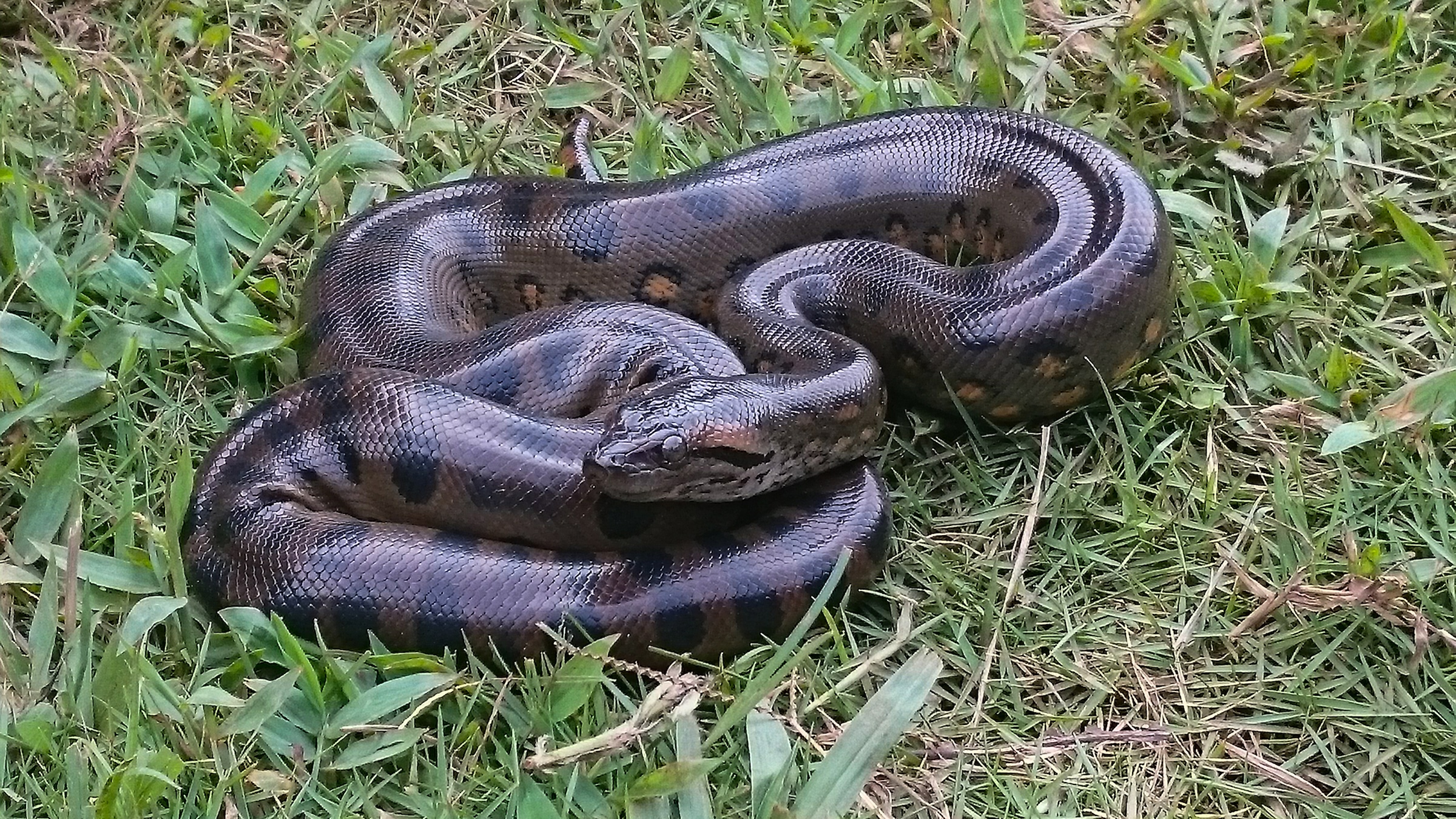Lava erupts from gigantic fissure in Iceland following earthquake swarm — and the photos are epic
A lava-spewing fissure has opened up along Iceland's Sundhnúkur crater row as the Reykjanes peninsula experiences another volcanic eruption.
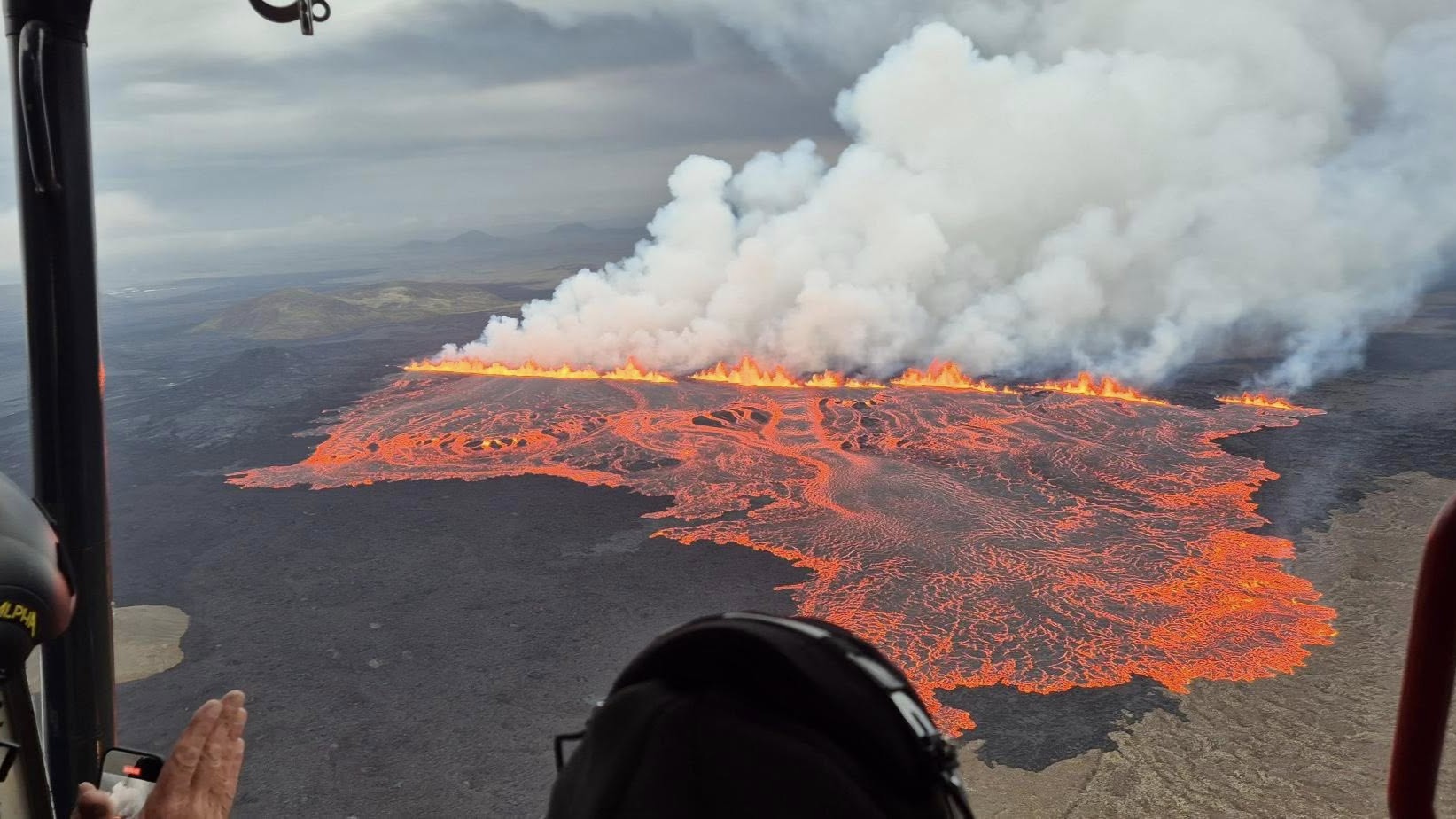
A volcanic eruption has sent lava spewing out of a giant fissure on the Sundhnúkur crater row in Iceland.
The fissure opened up on Wednesday (July 16) following a swarm of earthquakes, according to a statement released by the Icelandic Met Office (IMO).
Iceland's Civil Protection Department shared stunning aerial photos of the eruption on Facebook, showing lava blasting from the fissure like a wall of fire and flooding the landscape.
The "intense earthquake" swarm began in the early hours of Wednesday morning, with the eruption starting at 3.56 a.m. local time, according to the IMO statement. The eruption is ongoing.
The latest observations, reported at midday local time, have revealed that the eruption has spread to a second fissure. The larger fissure is estimated to be around 1.5 miles (2.4 kilometers) long, while the smaller fissure is about 1,600 feet (500 m) long.
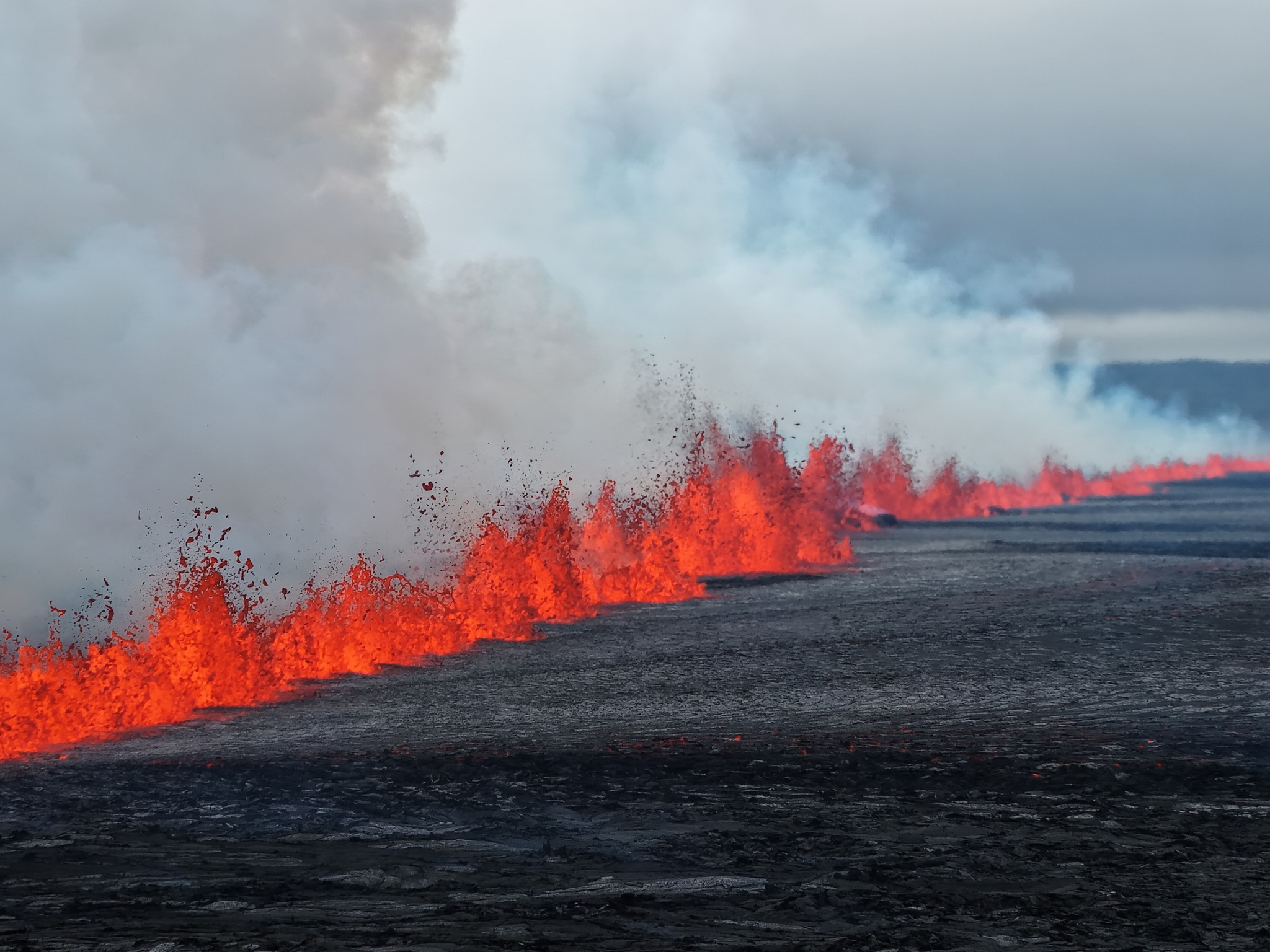
Unlike previous eruptions that have hit the area over the last few years, this eruption took place before magma had reached their peak. "Before the eruption began, the amount of magma that had accumulated under Svartsengi was about 2/3 of the amount that erupted from there in the last eruption," IMO representatives wrote.
Related: Melting glaciers could trigger volcanic eruptions around the globe, study finds
Get the world’s most fascinating discoveries delivered straight to your inbox.
The lava isn't approaching any infrastructure. However, winds have carried gas pollution from the volcano to some populated areas. Authorities have reported high levels of gas pollution in the municipality of Reykjanesbær, although these are now decreasing, according to the IMO statement. Volcanic eruptions emit sulfur dioxide (SO2) and other matter that can be harmful when inhaled.
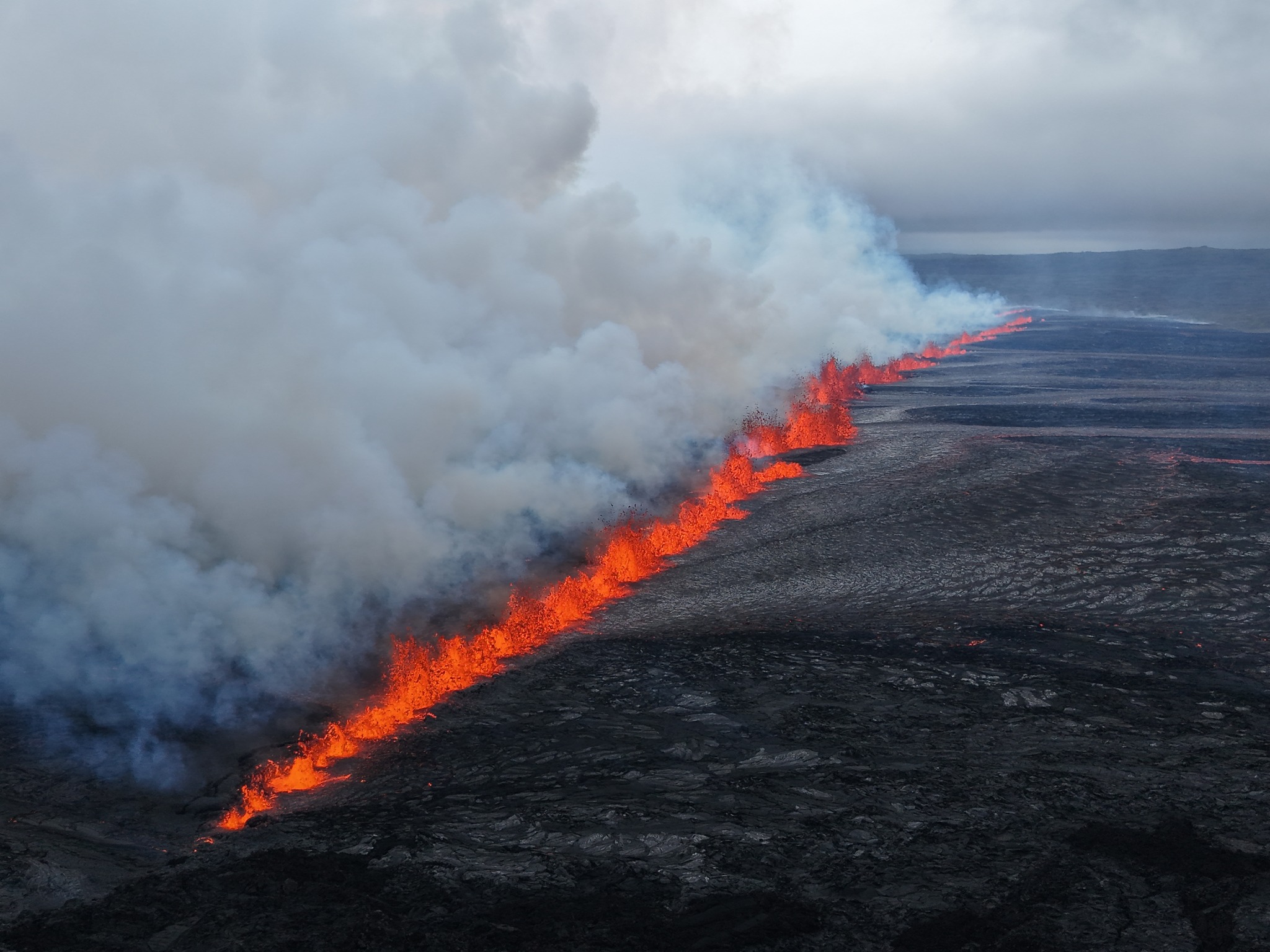
The IMO also reports the formation of "witches' hairs" that are being carried by the wind. "These are tiny glass fibers that form when lava flows cool rapidly and expand," representatives wrote. "They are light and can travel long distances. Witches' hairs can cause discomfort to the skin and eyes, and people are therefore urged to be careful outdoors near the eruption sites."
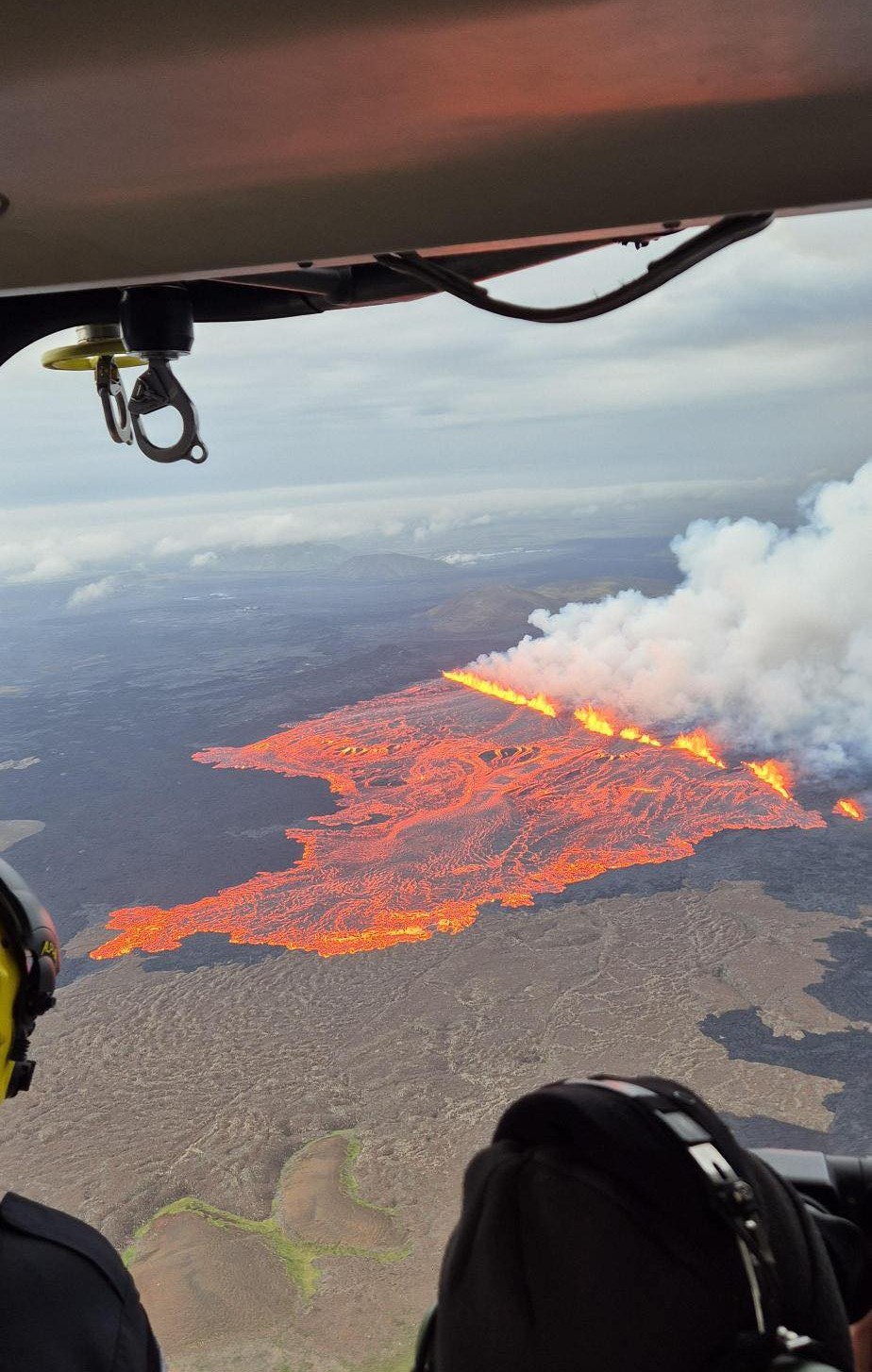
Located between Stóra-Skógfell and Sýlingarfell on Iceland's Reykjanes peninsula, the current activity is close in proximity to where magma flows occurred during previous eruptions, according to Iceland's Civil Protection Department.
This part of southwest Iceland is well known for volcanic activity and has seen a string of similar eruptions in recent years. The latest lava-spewing fissure is dramatic, but they can be much larger. For example, a 2.5-mile-long (4 kilometers) fissure opened up in 2023, spewing enough lava to fill an Olympic swimming pool in 20 seconds.
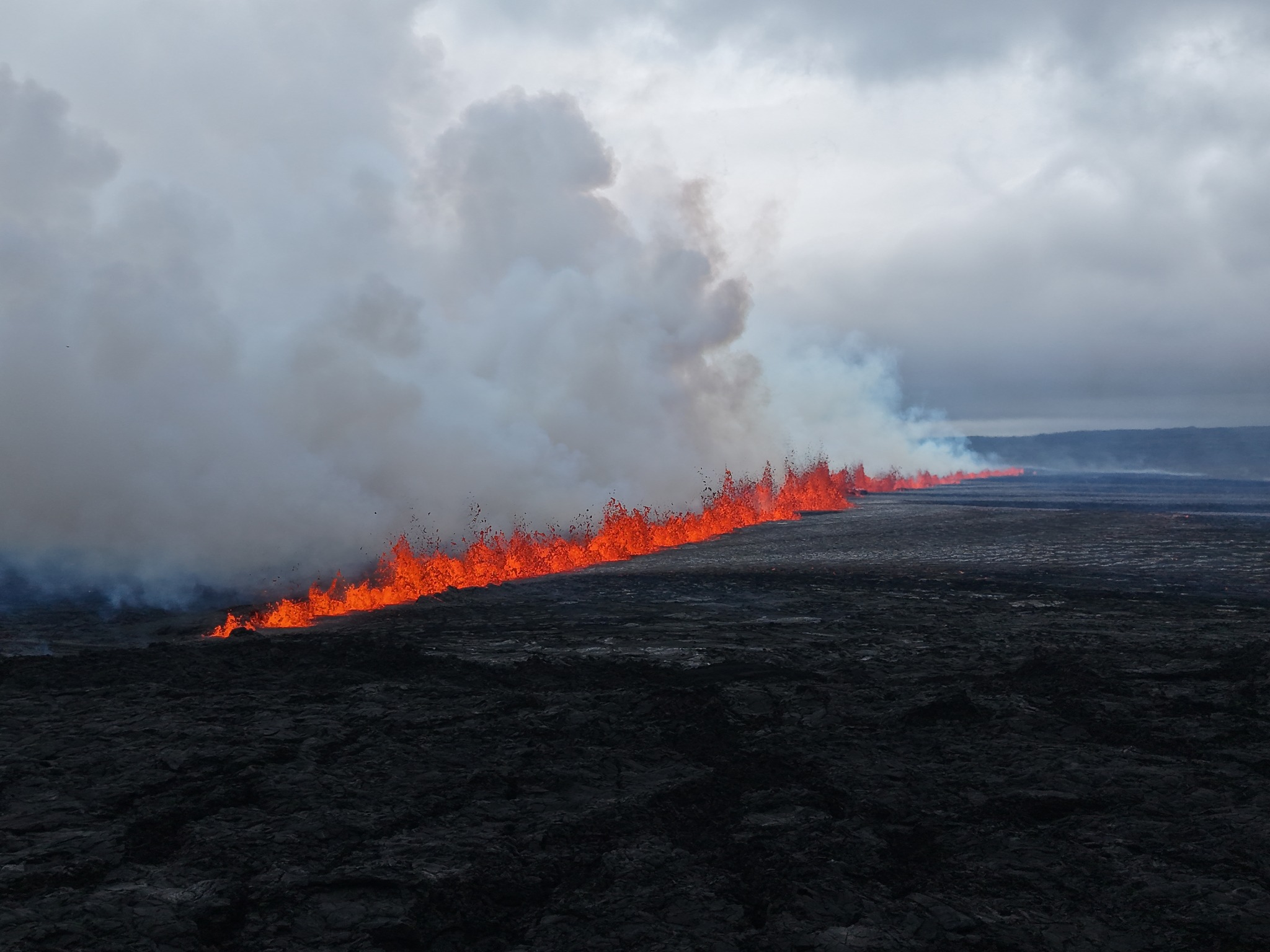

Patrick Pester is the trending news writer at Live Science. His work has appeared on other science websites, such as BBC Science Focus and Scientific American. Patrick retrained as a journalist after spending his early career working in zoos and wildlife conservation. He was awarded the Master's Excellence Scholarship to study at Cardiff University where he completed a master's degree in international journalism. He also has a second master's degree in biodiversity, evolution and conservation in action from Middlesex University London. When he isn't writing news, Patrick investigates the sale of human remains.
You must confirm your public display name before commenting
Please logout and then login again, you will then be prompted to enter your display name.
